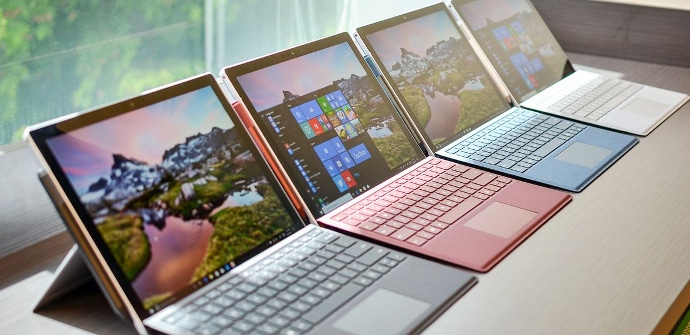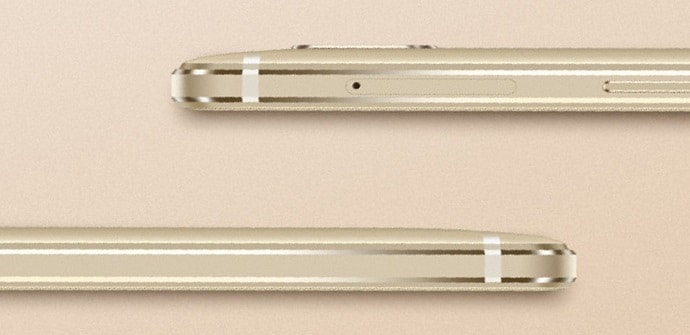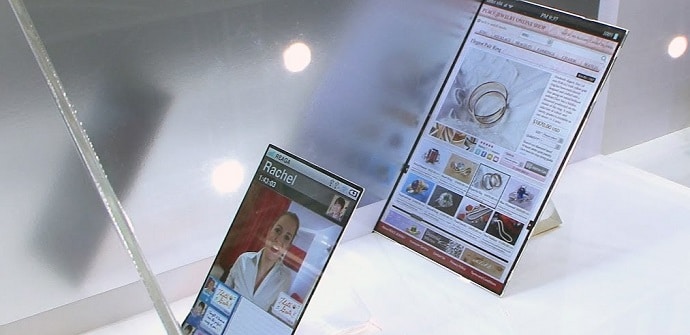
Yesterday we did a review by those materials for tablets and smartphones that fell into oblivion after living his little golden age. As we mentioned, the changes that happen in consumer electronics are very fast, and the trends that at any given time are the most used by manufacturers and the most demanded by consumers, in a short time can be out of date due to the appearance of other
Today we will see what are the elements that in recent years have taken on a lot of weight and that are now fundamental in components of devices as diverse as housings, screens or batteries. Will we see mere evolutions of the most popular of the past, or will they be something really new that is destined to mark a before and after in the sector? Next we will try to verify it.

1. Ceramic
In the list of materials for tablets and smartphones that we showed you yesterday, we saw that an element called «Flexible ceramics» had experienced a small boom and then disappeared. At first, its destination was the chips and other internal components that would see their dimensions reduced, and therefore, they would make the supports thinner and lighter. However, the first one that we will show you today seems to be in good health.
This is the ceramics that we all know, that we can now see in the housings of the new mobiles from firms such as Elephone, which combine it with others. In theory, this material not only offers greater resistance, but also gives more elaborate finishes to the terminals in which it is incorporated. For now, its purpose has been reduced to the merely aesthetic. Do you think it is eye-catching and that it can be profitable for manufacturers and comfortable for the public?
2. Aluminum
Secondly, we find a metal that sometimes appears mixed with ceramics or other elements, and other times, it goes alone. Like the first one that we have presented to you, it is present on the covers of a large number of models both in the tablet format and on the smartphone. Its main attractions are two: easy to get and relatively inexpensive to extract, and very malleable, which ultimately translates into the fact that the models that incorporate it weigh less and are slimmer. For now, it seems that it is still on the crest of the wave and we see an example in the transition that Chinese manufacturers that were limited to low cost, have left plastic behind to welcome aluminum.

3. Materials for rugged tablets
On other occasions we have talked to you more about a series of devices that are now trying to gain more visibility both among the audiences to whom they have been directed since their inception, as well as for the rest: The rugged. These models are characterized by very well withstanding extreme temperature changes, the entry of water and dust, and also bumps, falls and scratches. In them, we find two elements that can be somewhat strange: The rubber, which can serve as a shock absorber if placed on the covers despite sacrificing performance in thickness or weight, and the magnesium, which, as was the case with aluminum, is combined in many of these terminals but also in conventional ones. Are they necessary to give devices more durability?
4. Glass
This element has been paramount in consumer electronics since its inception. However, it has undergone significant variations and the crystals that have appeared recently are very different from those that existed not so long ago. Now, it is not only found on the screens, but also covers the aluminum back covers and other components of many terminals to give them more shine and aesthetic appeal. The glass used in the diagonals is now thinner, more resistant to bumps and scratches, and offers greater clarity of the contents that are displayed through the panels. Corning Gorilla Glass, DragonTrail or 2,5 D are some of the most powerful technologies in this field.

5. Silicene
We close this list of materials for tablets and smartphones with one of which there are still many unknowns. Silicane has been called the graphene competitor that we told you more about yesterday. Its main benefit related to consumer electronics is the fact that, in theory, it is somewhat cheaper to produce and implant than graphene. Its application, if it becomes global in the devices, would be in the batteries, since, incorporated in lithium batteries, it could improve their connectivity, extend their useful life up to 5.000 cycles load, and also reduce its dimensions, with the consequent reduction in the size of the devices in which it is present. Will it be one of those revolutionary elements or will it fall into oblivion?
What do you think about all these components? Do you think they have managed to displace the older ones, or is there still time for their final consolidation? What other elements could have gained weight in the devices in recent years? We leave you available related information, such as a compilation of what can be the best material for tablets so you can learn more.